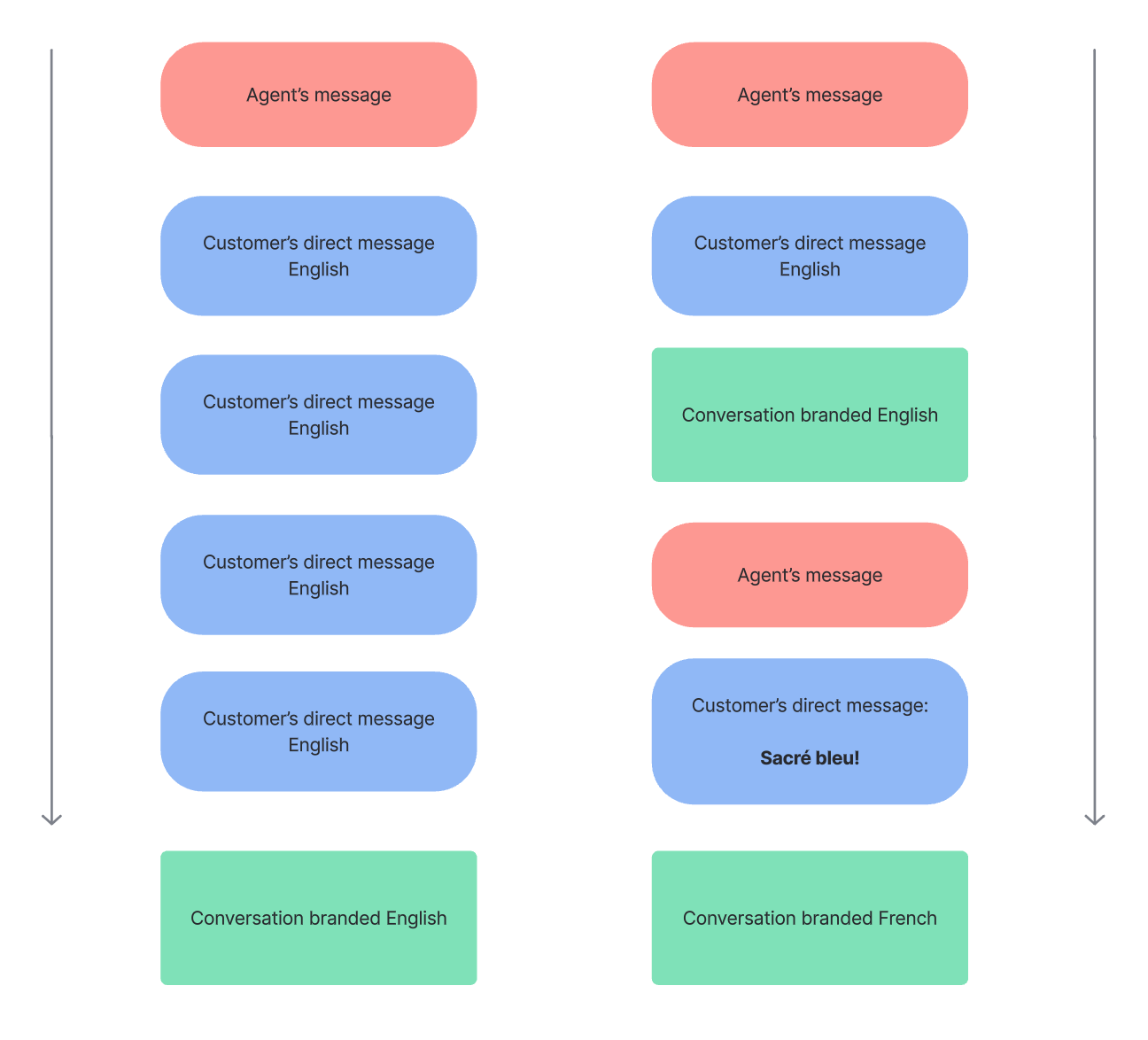Direct Conversation and Direct Message
Some automation processes allow you to apply filters (language, sentiment) to the whole conversation or to individual messages.
This is why it is important to understand differences between a direct conversation (DC) and a direct message (DM).
Direct conversation
A direct conversation is a body of messages exchanged between two profiles on a social media network.
In other words, when your customer sends a direct message to your Facebook profile, they are starting a direct conversation.
Conversations are, technically speaking, endless. Any interaction between any two profiles on a given social media network is considered a single direct conversation.
For example, imagine that follower John sent you a direct message on Facebook 10 years ago. You replied, and that was it. If John sends you another message tomorrow, the new message will be a part of the conversation that started 10 years ago.
Direct message
A direct message is a single ‘unit’ of a direct conversation that was sent to your profile (you) by another profile (your customer).
How we analyze conversations and messages
Understanding the differences between direct conversations and direct messages is important for handling communication with your followers, whether in immediate sorting or in complex flow automations.
Community feeds (all incoming, sent, etc.) only work with direct conversations (not with with individual direct messages).
Filters related to the notion of ‘message’ work with aggregated values from direct messages. This applies to the following filters:
Language
Sentiment
Message type
Media type
Chatter messages
Fulltext
Fulltext search occurs in the last 100 direct messages including brand and customer messages.
Some filters allow you to make a choice to apply them on the message level or the conversation level.
Direct messages
On the direct message level, a filter is applied to a single message.
When a new direct message arrives from a customer, it is evaluated against filters. If it meets the conditions, your rule is triggered.
Direct conversations
On the direct conversation level, things are interesting 🙂
Only your customers' messages are considered in the filters.
Example: Your agent’s reply in German to your customer's French messages would have no effect on the message/conversation being filtered as French.
Every time a new direct message is received in a direct conversation, this is what happens:
Automation selects one or multiple customer messages that arrived after the previous agent's responses.
Selection logic:
the latest direct message from your customer
up to 10 previous customer’s direct messages or all previous customer’s direct messages up your own latest message, whichever comes first
We analyze the applicable messages - first language, then sentiment.
Based on this analysis, language and sentiment are determined.
Only the most recent detected language and sentiment are stored. In other words, the language of the direct conversation is always determined by the last analysis.

Instagram and Facebook anomalies
Instagram
When your follower mentions you (your brand’s profile) anywhere on Instagram in any story, Instagram API will treat that mention as a direct message between that follower and your profile. That mention will, as a result, slot in the queue of direct message within the direct conversation between you and that specific follower.
This, however, reclassifies the entire direct conversation to a Story. When an actual direct message arrives, the story turns into a direct conversation again.
direct message → becomes a part of direct conversation
story mention → becomes a part of direct conversation → direct conversation turns into a story
 PIE rules that are applied over direct conversation are not executed.
PIE rules that are applied over direct conversation are not executed.direct message → becomes a part of direct conversation → story turns into a direct conversation
Facebook
Replies to Facebook stories are always treated as direct messages, and the Facebook API does not have the ability to reference the story in the message. This means that when you receive a reply to a story you created, you will receive a direct message, but Emplifi has no way to connect the message to the story you posted.
In addition, the Facebook API does not support story mentions. Because story mentions are not supported, you will not receive a message for story mentions.
